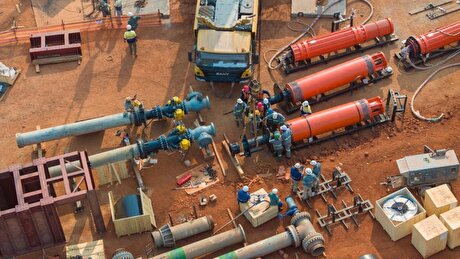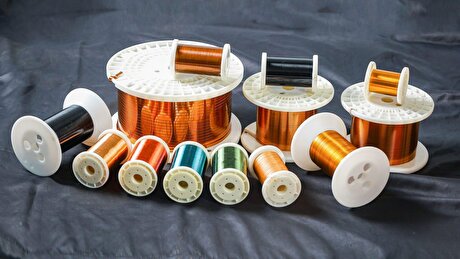
Iranian Steel Expands as Capacity Grows, Domestic Demand Weakens

The name of Iran is increasingly heard in the global steel market when it comes to semi-finished steel products trade as growing steelmaking capacities in the country, together with weakening domestic demand, push export volumes up.
In the first half of the current Iranian year (March 21-Sept. 22, 2017) the country exported 3.2 million tons of semi-finished steel products, up by 77% compared with last year’s 1.8 million tons, Metal Bulletin reported.
This growth was mainly attributed to higher slab shipments, which reached 1.6 million tons over the period, having almost tripled year-on-year. Billet and bloom exports rose by 25% year-on-year, totaling 1.6 million tons in March-September.
Over the 12 months of the current Iranian year (ending March 20, 2018), the country targets the export of 5.3 million tons of semi-finished products, with around 35% due to slabs and the rest to billets and blooms.
Major Contributor to Export Growth
Expansion of the country’s steelmaking capacities in 2016-17 was one of the major factors influencing the growth of export volumes.
For slabs, it was the massive expansion at the country’s largest steelmaker Mobarakeh Steel Company and its subsidiaries, which increased the company’s total capacity to produce slabs by 2.6 million, to 10.3 million tons per year.
In November 2016, the company added a 1.8 million tpy continuous casting machine at its main plant located in Isfahan Province, which increased its slab production capacity to 7.2 million tpy. In April 2017, the producer also doubled, to 1.6 million tpy, slab production capacity at its subsidiary Saba Steel Complex.
Another MSC subsidiary, Hormozgan Steel Company, has the capacity to produce 1.5 million tpy of slabs. In total, MSC holds 85% of the country’s 12 million tpy of slab-making capacity as well as 71% of its 10 million tpy capacity for hot-rolled flat products.
The billet segment has also seen capacity increase by around 5 million tpy over the past two years, with the majority of projects launched in 2017. This means that they still need time to strengthen their positions and get exports going.
Among them is the 800,000 tpy Qaenat Steel Complex, a 650,000 tpy expansion project at Khorasan Steel Complex, both located in Khorasan Razavi Province, the 1.2 million tpy Chadormalu Steelmaking Plant in Yazd Province and the 1 million tpy Bardsir Steelmaking Plant.
In 2016, only Esfahan Steel Company expanded billet production, by adding a 1.2 million tpy billet continuous casting machine to its 3.8 million tpy existing capacity. These launches helped lift the country’s total capacity for billet production to around 23 million tpy. However, around a half of these capacities remains under-utilized due to the lack of finance and demand in the domestic market.
Weak Domestic Demand
Domestic semi-finished steel consumption in the first half of the current Iranian year dropped by 4% to 7.26 million tons in the country, the Iranian Steel Producers Association announced.
This was mainly attributed to the drop in finished long steel production amid a lack of financing in the domestic construction sector.
Despite this fact, both billet and slab output in Iran rose, supported by higher exports, demonstrating a 15% and 13% growth to reach 5.6 and 4.9 million tons, respectively.
At the same time, the demand for finished flat steel products in the country improved in the first half of the current Iranian year, following the rise in auto production, along with steel pipe and profile manufacturing.
This helped Iranian producers mitigate the negative effect of the anti-dumping cases against the imports of HRC in Europe and Thailand.
Iran’s HRC exports dropped by 80% to 156,000 tons in the first half of the current Iranian year. Thailand set the definitive duty of 7.25% for MSC products in May, while the duty for other Iranian producers stands at 38.27%.
The European Commission concluded its investigation in October this year by imposing fixed charges of €17.60-96.50 ($20.66-113.29) per ton as a trade defense measure against HRC originating from the four countries, under which Iran received a charge of €57.50 ($68) per ton.
Expanding Boundaries
These restrictive measures are, however, not viewed as a challenge for Iranian producers, as domestic flat steel demand renders ample support to the production sector.
On the contrary, market participants see it as a timely opportunity to increase semi-finished exports.
“The market of semi-finished steel is not protected in Europe and HRC export may be replaced by slab and billet,” one source said.
At present, the major consumers of Iran’s semi-finished steel products are located in Asia as well as in the Middle East and North Africa.
Late October, news spread around the market about the possible 25% increase in billet shipments from Iran to Asia in the mid-term.
“[Billet] export volumes from Iran [to Asia] may increase by as much as 25% in the mid-term, reaching 750,000 tons,” a trader based in northeast Asia said. “In the future, it is possible that Iran may export some material to China too, because Iranian producers are enjoying the advantage of access to cheap gas and iron ore compared to China,” another source said.


Trump weighs using $2 billion in CHIPS Act funding for critical minerals

Codelco cuts 2025 copper forecast after El Teniente mine collapse

Electra converts debt, launches $30M raise to jumpstart stalled cobalt refinery

Abcourt readies Sleeping Giant mill to pour first gold since 2014

Barrick’s Reko Diq in line for $410M ADB backing

Nevada army depot to serve as base for first US strategic minerals stockpile

Tailings could meet much of US critical mineral demand – study

Viridis unveils 200Mt initial reserve for Brazil rare earth project

SQM boosts lithium supply plans as prices flick higher

Energy Fuels soars on Vulcan Elements partnership

Northern Dynasty sticks to proposal in battle to lift Pebble mine veto

Giustra-backed mining firm teams up with informal miners in Colombia

Critical Metals signs agreement to supply rare earth to US government-funded facility

China extends rare earth controls to imported material

Galan Lithium proceeds with $13M financing for Argentina project

Silver price touches $39 as market weighs rate cut outlook

First Quantum drops plan to sell stakes in Zambia copper mines

Ivanhoe advances Kamoa dewatering plan, plans forecasts

Texas factory gives Chinese copper firm an edge in tariff war

Energy Fuels soars on Vulcan Elements partnership

Northern Dynasty sticks to proposal in battle to lift Pebble mine veto

Giustra-backed mining firm teams up with informal miners in Colombia

Critical Metals signs agreement to supply rare earth to US government-funded facility

China extends rare earth controls to imported material

Galan Lithium proceeds with $13M financing for Argentina project

Silver price touches $39 as market weighs rate cut outlook

First Quantum drops plan to sell stakes in Zambia copper mines

Ivanhoe advances Kamoa dewatering plan, plans forecasts

















